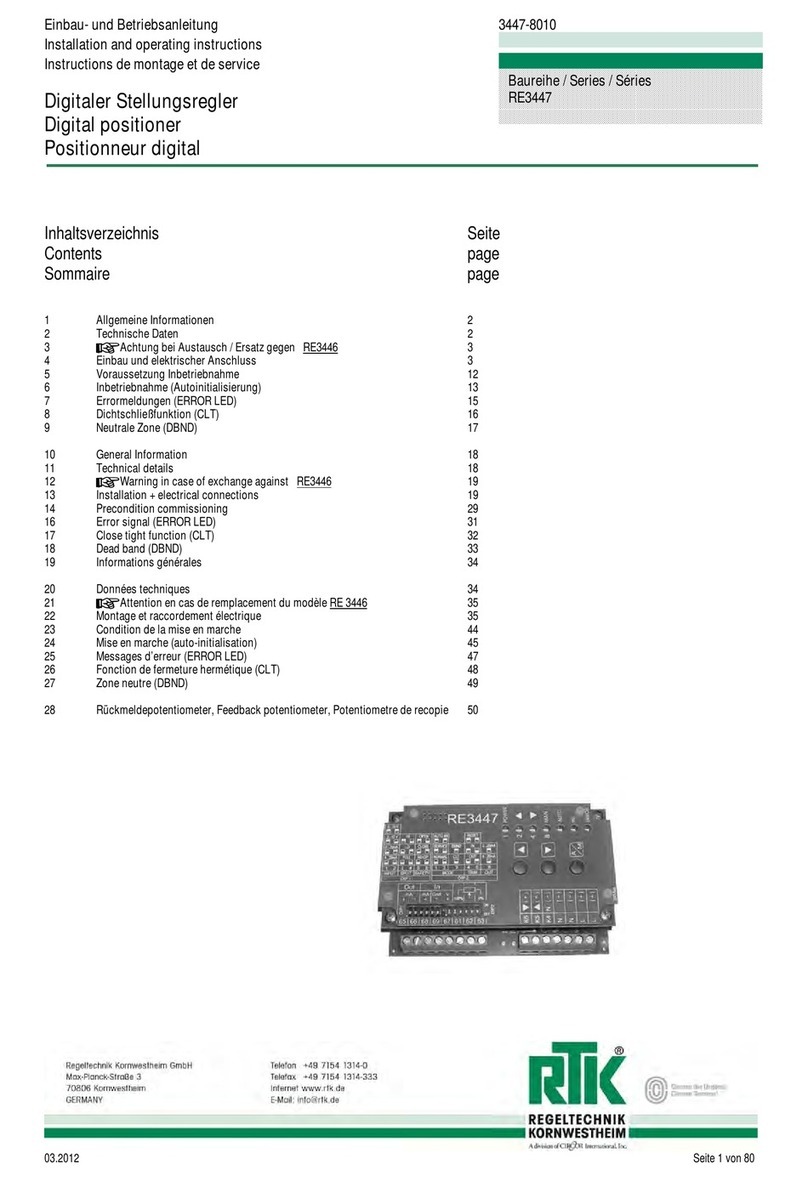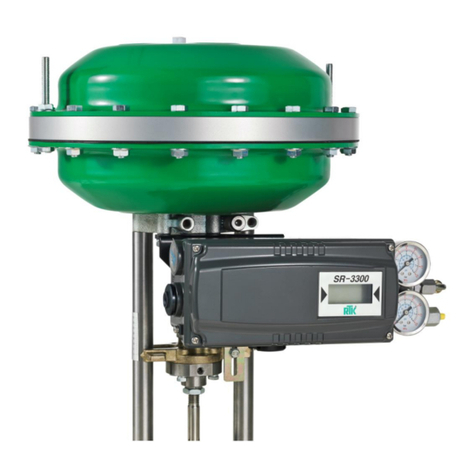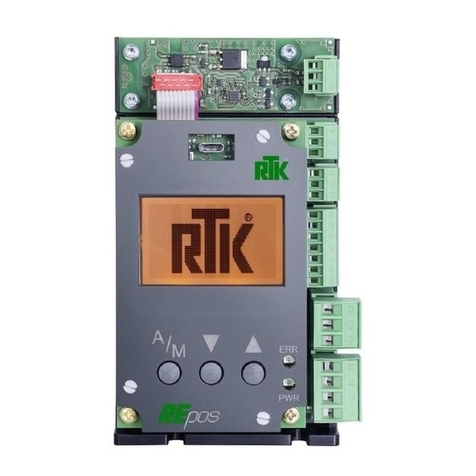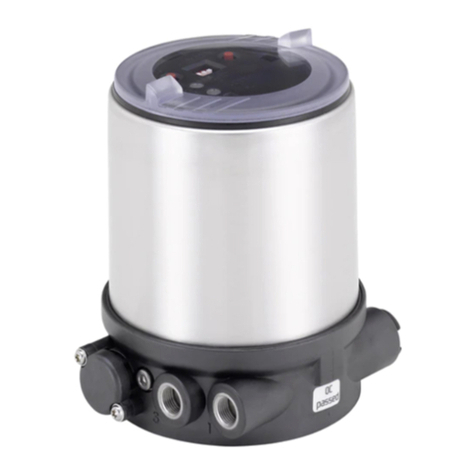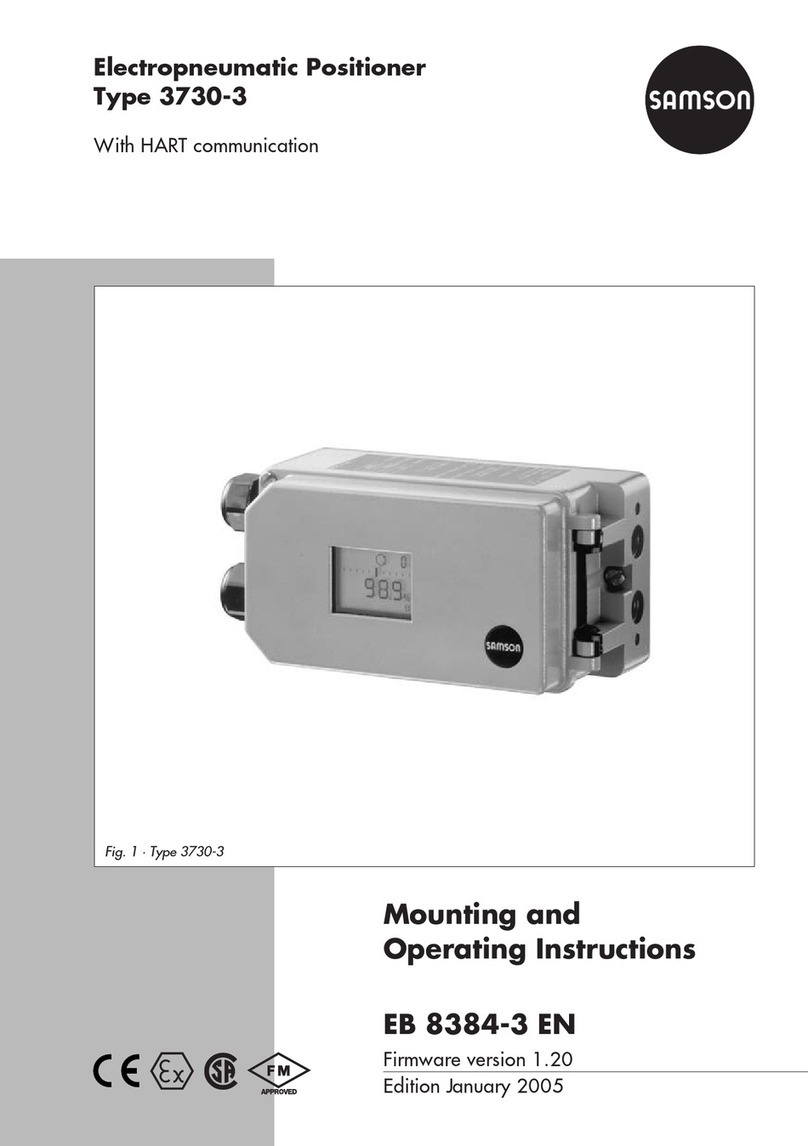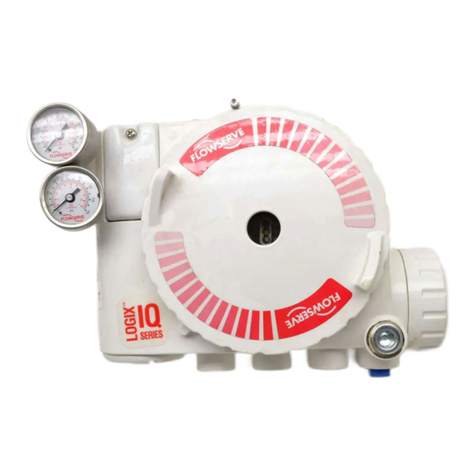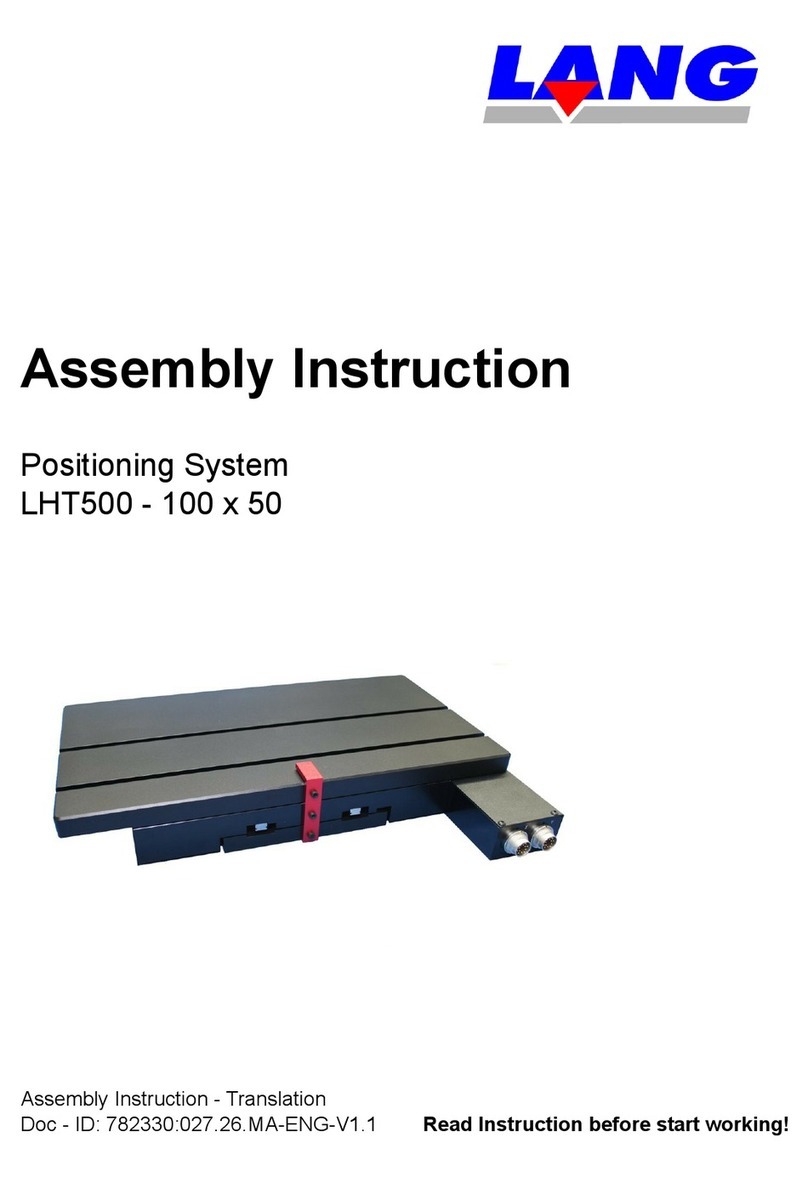
Einbau- und Betriebsanleitung
Installation and Operating instructions
Instructions de montage et de service
3581-8010
07/2009
3.4 unüberwachter Handbetrieb
Nach korrekter Eingabe des Paßwortes kann das Ventil im Handbetrieb mit den "Öffnen" und "Schließen" Tasten bewegt werden.
Fahren sie das Ventil in Mittelposition +/- 20%. Die Initialisierung darf auf keinen Fall in der Nähe der Endlagen gestartet werden.
4Funktionsbeschreibung
Der Regler arbeitet in 4 verschiedenen Betriebsarten.
4.1 Handbetrieb
Taste drücken LED leuchtet Betriebsart: „Handbetrieb“
Stellschritte nur über Tasten am RE 3581 möglich. Alle anderen Eingänge abgeschaltet.
4.2 Automatikbetrieb
Taste drücken LED aus Betriebsart: „Automatikbetrieb“
Stellschritte nur über Führungsregler möglich
4.3 Stellungsreglerbetrieb
An Klemmen 68 und 69 Ausgang des Führungsreglers anschließen die LED 4..20mA leuchtet.
Der Hub wird durch ein 4..20mA Signal zurückgemeldet (Klemme 65 und 66). Die Rückmeldung ist galvanisch getrennt, 24V DC nötig.
4.4 Sicherheitsposition bei Signalausfall
Sollte bei Signalausfall (4..20mA) eine Sicherheitsstellung angefahren werden sind die Eingänge Z1 bis Z3 wie folgt anzuschließen:
Sicherheitsposition schließen: An Z1 und Z3 230V AC oder 24V DC je nach Ausführung anschließen
Sicherheitsposition öffnen : An Z1 und Z2 230V AC oder 24V DC anschließen
Z1 bis Z3 nicht belegt: Antrieb bleibt bei Signalausfall stehen (nur bei 4..20mA und 2..10V Ansteuerung!).
Der Regler fährt bei Signalausfall (< 2mA) in die eingestellte Position.
5Funktionsbeschreibung
Der DAC®ist ein Mikroprozessorsystem. Seine Aufgabe ist es die Befehle des Führungsreglers und ihre Auswirkungen auf den Ventilhub zu
überwachen. Bei festgestelltem Fehlverhalten, welches durch Messung der Hubstrecke kontrolliert wird, zeigt der DAC®eine entsprechende
Fehlermeldung an. Das System muß dazu einmalig initialisiert werden. Die Ventilstellung wird als 4..20mA Signal ausgegeben.
Die Endlagen (Hub 0% und Hub 100%) werden ohne Endschalter automatisch erkannt.
Der Antrieb kann durch Umschalten von Automatik auf Handbetrieb mit Hilfsenergie manuell gefahren werden.
Zusätzlich werden die Stellbefehle ausgewertet und überprüft ob sie sinnvoll sind. Wird ein periodischer Wechsel von „Öffnen -“ und
„Schließbefehlen“ festgestellt, so erkennt DAC®einen Grenzzyklus. Der Regelkreis wird durch Manipulation der Stellschritte stabilisiert.
5.1 Galvanisch getrennte Rückmeldung
Das Rückmeldesignal (4...20mA) wird auf den Hub automatisch bei der Initialisierung abgeglichen. Es ist vom Eingangssignal galvanisch
getrennt und benötigt deshalb eine externe Spannungsversorgung (12V-24V DC).
5.2 Intelligente Behandlung der Endlagen
Vor dem Erreichen der Endlagen (Hub 0% bzw. Hub 100%) schaltet der RE 3581 den Antrieb ab
Nachdem weiterhin ein Schließbefehl anliegt (ca. 5 sec.), wird der Antrieb in die Position ‚Dicht






